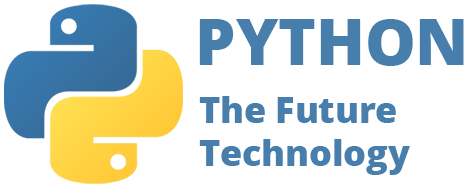About Python Language
What is Python?
Python is one of the most popular programming languages out there in the market which developers use to create various applications. Python is a widely-used, interpreted, object-oriented, and high-level programming language with dynamic semantics, used for general-purpose programming. It was created by Guido van Rossum, and first released on February 20, 1991.
Python is a general-purpose interpreted, interactive, object-oriented, and high-level programming language. Python has been one of the premier, flexible, and powerful open-source language that is easy to learn, easy to use, and has powerful libraries for data manipulation and analysis
Why we love it
- Great first language
- Powerful and flexible
- Large programming community
- Endless libraries and packages
- World-wide popularity
While you may know the python as a large snake, the name of the Python programming language comes from an old BBC television comedy sketch series called Monty Python’s Flying Circus.
It’s used extensively to implement complex Internet services like search engines, cloud storage and tools, social media and so on. Whenever you use any of these services, you are actually very close to Python, although you wouldn’t know it.
Many developing tools are implemented in Python.
More and more everyday use applications are being written in Python. Lots of scientists have abandoned expensive proprietary tools and switched to Python.
Lots of IT project testers have started using Python to carry out repeatable test procedures. The list is long.
Of course, van Rossum did not develop and evolve all the Python components himself. The speed with which Python has spread around the world is a result of the continuous work of thousands (very often anonymous) programmers, testers, users (many of them aren’t IT specialists) and enthusiasts, but it must be said that the very first idea (the seed from which Python sprouted) came to one head – Guido’s.
Python goals
In 1999, Guido van Rossum defined his goals for Python:
- open source, so anyone can contribute to its development;
- suitable for everyday tasks, allowing for short development times.
- an easy and intuitivelanguage just as powerful as those of the major competitors;
- code that is as understandable as plain English;
A high rank in the top ten of the TIOBE Programming Community and PYPL Popularity of Programming Language Indexes.
Why Python?
- it’s easy to learn– the time needed to learn Python is shorter than for many other languages; this means that it’s possible to start the actual programming faster;
- it’s easy to teach– the teaching workload is smaller than that needed by other languages; this means that the teacher can put more emphasis on general (language-independent) programming techniques, not wasting energy on exotic tricks, strange exceptions and incomprehensible rules;
- it’s easy to usefor writing new software – it’s often possible to write code faster when using Python;
- it’s easy to understand– it’s also often easier to understand someone else’s code faster if it is written in Python;
- it’s easy to obtain, install and deploy – Python is free, open and multiplatform; not all languages can boast that.
Python Examples
Python is a great choice for:
- Web and Internet development (e.g., Django and Pyramid frameworks, Flask and Bottle micro-frameworks)
- Scientific and numeric computing(e.g., SciPy – a collection of packages for the purposes of mathematics, science, and engineering; Ipython – an interactive shell that features editing and recording of work sessions)
- Education(it’s a brilliant language for teaching programming!)
- Desktop GUIs(e.g., wxWidgets, Kivy, Qt)
- Software Development(build control, management, and testing – Scons, Buildbot, Apache Gump, Roundup, Trac)
- Business applications(ERP and e-commerce systems – Odoo, Tryton)
- Games(e.g., Battlefield series, Sid Meier\’s Civilization IV…), websites and services (e.g., Dropbox, UBER, Pinterest, BuzzFeed…)
- And that’s just the beginning…

